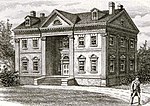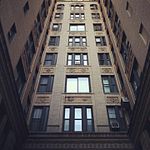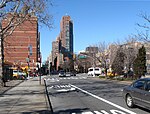93rd Street station
1879 establishments in New York (state)1940 disestablishments in New York (state)Defunct New York City Subway stations located abovegroundFormer elevated and subway stations in ManhattanIRT Ninth Avenue Line stations ... and 3 more
Manhattan railway station stubsRailway stations closed in 1940Railway stations in the United States opened in 1879
93rd Street was a local station on the demolished IRT Ninth Avenue Line in Manhattan, New York City. It had two levels. The lower level was built first and had two tracks and two side platforms and served local trains. The upper level was built as part of the Dual Contracts and had one track that served express trains that bypassed this station. It opened on June 21, 1879 and closed on June 11, 1940. The next southbound stop was 86th Street. The next northbound stop was 99th Street.
Excerpt from the Wikipedia article 93rd Street station (License: CC BY-SA 3.0, Authors).93rd Street station
West 93rd Street, New York Manhattan
Geographical coordinates (GPS) Address Nearby Places Show on map
Geographical coordinates (GPS)
| Latitude | Longitude |
|---|---|
| N 40.790922222222 ° | E -73.968930555556 ° |
Address
West 93rd Street 100
10025 New York, Manhattan
New York, United States
Open on Google Maps








